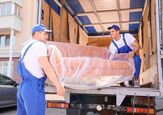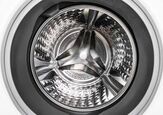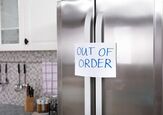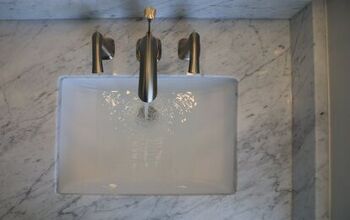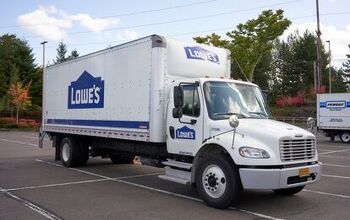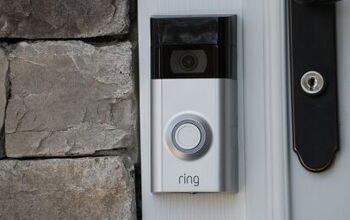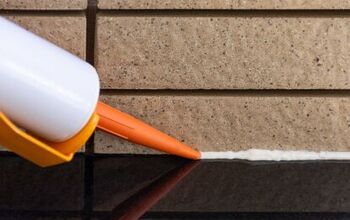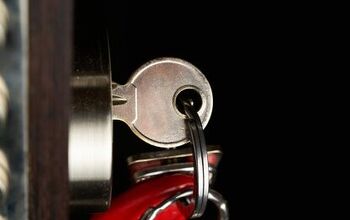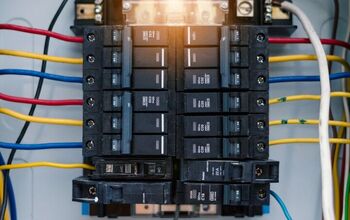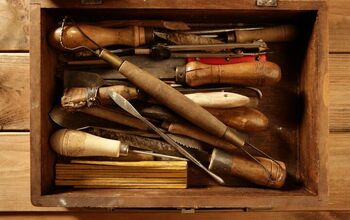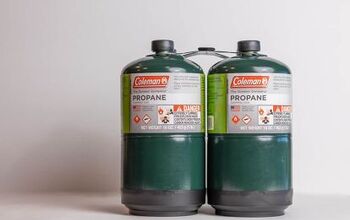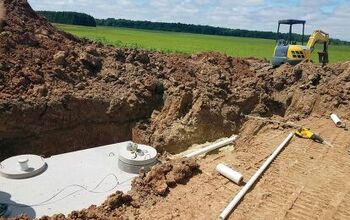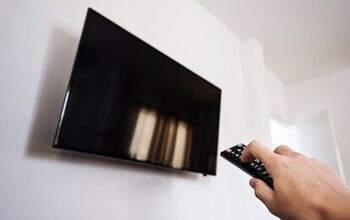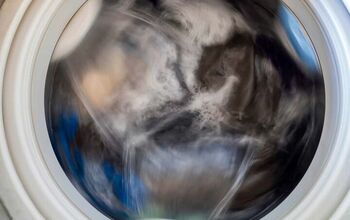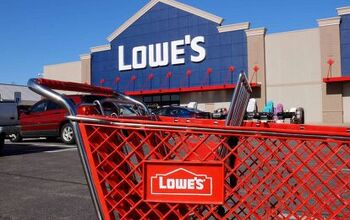How To Clean Pet Damage Before Moving

As much as we all love our pets, we know that they can take a toll on any house or apartment they live in. Between biting, scratching, and shedding hair, they always make their presence known. That’s why you must learn how to clean pet damage before moving to avoid problems later.
You must thoroughly vacuum your floors and scrub them as needed to remove stubborn pet stains before moving. Replace your air filter and hire an HVAC service to clean your air ducts to remove trapped pet hair. It’s also important to cross-ventilate your home by opening several windows and running fans to remove pet odors.
Start cleaning your home as early as possible to ensure you have time for all your other moving responsibilities. The last thing you want is to lose your deposit and owe expensive cleaning fees to your landlord. Follow along as we explore how to clean pet damage before moving.
How To Clean Up After Your Pets Before Moving
You simply can’t clean up after your pets in a single day before moving if you want to do a good job. Instead, you should create a pet damage cleaning checklist, so you don’t have to rush the job. That checklist should include several important chores, such as:
1. Vacuum Thoroughly
Hair is beautiful when it’s on your dog or cat’s body, but it stops there. Loose pet hair can make a mess all over your house, and getting it out of a carpet is a pain. You must thoroughly vacuum your carpeted floors before selling your house or moving out of an apartment.
Hopefully, you’ve kept up with vacuuming during your time living there. Doing so ensures there’s not nearly as much stubborn pet hair lodged in the carpet fibers. If not, vacuuming will take longer, and you may even need to use a shop vac.
A shop vac may come in handy either way, as it's more powerful than most standard household vacuums. Go one room at a time and vacuum the floors until the carpets are clean. Regularly empty the canister as needed to make room for more pet hair.
2. Scrub The Floors
Does your house or apartment have vinyl, laminate, or hardwood floors? If so, they likely contain traces of saliva, dander, and hair from your beloved pets, which is normal. However, these things can reflect poorly on you when listing your house or ending a lease, so you must clean the floors.
Nature’s Miracle and OdoBan are great commercial cleaning products to use on your floors. Whatever product you chose, make sure it’s meant for the type of floor you have. For example, using a hardwood floor cleaner on a carpet can cause serious damage.
You can avoid commercial cleaners altogether if you use distilled white vinegar and warm water to scrub the floors. Dilute the vinegar and create a 1:1 mixture, or else the vinegar may be too strong and discolor the floor. Clean these messes, such as cat vomit, as they appear, so you don’t have to worry about catching up before moving.
3. Treat Urine Stains
Treating urine stains is much different than treating standard animal sweat and saliva stains. Urine contains uric acid, salts, and proteins, which all result into a big problem when you’re about to move. The combination of everything in dog urine makes it penetrate deeply, and cat urine infamously smells even worse.
Cats have stronger-smelling urine than dogs because of how it’s concentrated in the kidneys. Ideally, you should use an enzymatic cleaner to remove dog and cat urine stains from your floors. Read the bottle and follow the directions, which probably recommend letting it sit for 15 minutes.
Carefully blot the remaining spray to soak it up, and repeat the process if neccessary. You can also use distilled white vinegar and warm water, but you must be careful. Letting white vinegar sit on carpet or hardwood for too long can create stains.
4. Use Potty Pads Until Moving Out
No matter how soon you plan to move, it’s worth training your dog to use potty pads. Even if you’re moving in 3 weeks, using potty pads during that time can reduce the risk of more accidents happening. The last thing you want is to spend the remaining days at your old house cleaning stubborn urine stains.
Place the potty pads in spots where your pets typically have accidents. That way, they already associate the area with having accidents. Doing so can protect your floors and keep bad smells at bay until you finally move out and into a new home.
Going forward, it’s worth using potty pads at your new home from the start. You can easily throw potty pads away after your dog uses them, and they’ll protect your floors from stains. Granted, they’re more effective for dogs than cats, but they come in handy if your pets spend a lot of time alone.
5. Clean Apartment Appliances And Furniture
This step only applies to renters, but it’s quite an important one. You must remove all traces of your pets from the appliances and furniture that your landlord provided. That’s because they expect you to leave those behind, and your landlord wants them to be in great condition.
You must thoroughly clean them to remove any traces of pet hair, dander, urine, vomit, and solid waste. Otherwise, you may face consequences, and your landlord won’t likely give your deposit back. Clean beneath your washer, dry, refrigerator, and dishwasher if they are provided.
Don’t forget about the sides of your refrigerator, as there’s a good chance they’re caked in pet hair. That’s especially important if your refrigerator is backed up against the wall, so you don’t typically see the side. Make sure to double-check the lint trap in your dryer, as it may retain dog and cat hair.
6. Replace Your Air Filter
Whether you rent or own your home, you must keep up with replacing the air filter. Unfortunately, air filters get dirty much faster in a house with pets, as they typically catch lots of loose hair and dander. You’re supposed to replace air filters every 90 days in most households, but it varies by home size and cleanliness.
However, it’s a great idea to replace your air filter right before moving as a courtesy to the next person who moves in. Renters are typically expected to replace their air filters, so failing to may result in penalties in extreme cases.
7. Clean Your Air Ducts
HVAC inspections are an essential part of selling a house, as the buyer must know as much as possible about a home before purchasing. The buyer will typically pay a third-party to inspect everything from the air conditioner and furnace to the ductwork. It’s recommended you clean your air ducts every 3 to 5 years, but many people don’t do that.
Doing so can help protect your HVAC system, improve airflow, and maximize efficiency to save on bills. There’s a good chance the buyer will ask you to pay to have the air ducts cleaned if the inspection yields bad results. This can further delay the closing process and add to your overall moving costs, which nobody wants.
In that case, it’s much better to have your air ducts cleaned long before the inspection. Air ducts get filthy in homes with pets, especially if you have long-haired cats. This can also ensure no pet hair is sticking out of your return vents when you move out.
8. Air The House Out
You’re probably all too familiar with the way your pets smell. While you may not mind it, the next buyer or renter may not be too thrilled if the smell remains. You owe it to them to thoroughly air the space out before leaving to remove any stubborn odors.
Crack the windows at different ends of the house for the best results. This can create cross-ventilation, which is more effective than opening one window. It also helps to run box fans and ceiling fans sporadically throughout the process to maximize airflow.
After closing the windows, it’s worth burning candles and using room sprays as needed. Repeat the process and cross-ventilate your home for at least 30 minutes per day until you move.
Summing It Up
Before moving out, you must use enzymatic cleaners to remove pet urine, sweat, and saliva stains. It also helps to use distilled white vinegar mixed with warm water to remove stubborn stains. Vacuum your floors, open windows to remove bad smells, and have your air ducts cleaned before moving.
Related Guides:

Nick Durante is a professional writer with a primary focus on home improvement. When he is not writing about home improvement or taking on projects around the house, he likes to read and create art. He is always looking towards the newest trends in home improvement.
More by Nick Durante
